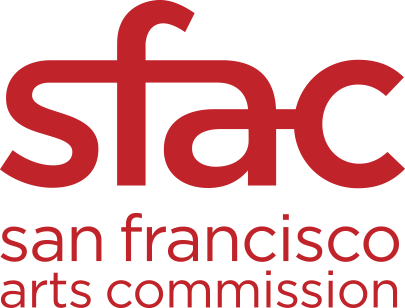Federal Law
TITLE 17 — COPYRIGHTS
Title 17 United States Code, Section 106A:
Rights of certain authors to attribution and integrity
- Rights of Attribution and Integrity.
Subject to section 107 and independent of the exclusive rights provided in section 106, the author of a work of visual art —
- shall have the right —
- to claim authorship of that work, and
- to prevent the use of his or her name as the author of any work of visual art which he or she did not create;
- shall have the right to prevent the use of his or her name as the author of the work of visual art in the event of a distortion, mutilation, or other modification of the work which would be prejudicial to his or her honor or reputation; and
- subject to the limitations set forth in section 113(d), shall have the right —
- to prevent any intentional distortion, mutilation, or other modification of that work which would be prejudicial to his or her honor or reputation, and any intentional distortion, mutilation, or modification of that work is a violation of that right, and
- to prevent any destruction of a work of recognized stature, and any intentional or grossly negligent destruction of that work is a violation of that right.
- Scope and Exercise of Rights.
Only the author of a work of visual art has the rights conferred by subsection (a.) in that work, whether or not the author is the copyright owner. The authors of a joint work of visual art are co-owners of the rights conferred by subsection (a.) in that work.
- Exceptions.
- The modification of a work of visual art which is a result of the passage of time or the inherent nature of the materials is not a distortion, mutilation, or other modification described in subsection (a.3.A.).
- The modification of a work of visual art which is the result of conservation, or of the public presentation, including lighting and placement, of the work is not a destruction, distortion, mutilation, or other modification described in subsection (a)(3) unless the modification is caused by gross negligence.
- The rights described in paragraphs (1.) and (2.) of subsection (a.) shall not apply to any reproduction, depiction, portrayal, or other use of a work in, upon, or in any connection with any item described in subparagraph (A.) or (B.) of the definition of ”work of visual art” in section 101, and any such reproduction, depiction, portrayal, or other use of a work is not a destruction, distortion, mutilation, or other modification described in paragraph (3) of subsection (a.).
- Duration of Rights.
- With respect to works of visual art created on or after the effective date set forth in section 610(a) of the Visual Artists Rights Act of 1990, the rights conferred by subsection (a.) shall endure for a term consisting of the life of the author.
- With respect to works of visual art created before the effective date set forth in section 610(a) of the Visual Artists Rights Act of 1990, but title to which has not, as of such effective date, been transferred from the author, the rights conferred by subsection (a.) shall be coextensive with, and shall expire at the same time as, the rights conferred by section 106.
- (3) In the case of a joint work prepared by two or more authors, the rights conferred by subsection (a.) shall endure for a term consisting of the life of the last surviving author.
- All terms of the rights conferred by subsection (a) run to the end of the calendar year in which they would otherwise expire.
- Transfer and Waiver.
- The rights conferred by subsection (a.) may not be transferred, but those rights may be waived if the author expressly agrees to such waiver in a written instrument signed by the author. Such instrument shall specifically identify the work, and uses of that work, to which the waiver applies, and the waiver shall apply only to the work and uses so identified. In the case of a joint work prepared by two or more authors, a waiver of rights under this paragraph made by one such author waives such rights for all such authors.
- Ownership of the rights conferred by subsection (a.) with respect to a work of visual art is distinct from ownership of any copy of that work, or of a copyright or any exclusive right under a copyright in that work. Transfer of ownership of any copy of a work of visual art, or of a copyright or any exclusive right under a copyright, shall not constitute a waiver of the rights conferred by subsection (a). Except as may otherwise be agreed by the author in a written instrument signed by the author, a waiver of the rights conferred by subsection (a.) with respect to a work of visual art shall not constitute a transfer of ownership of any copy of that work, or of ownership of a copyright or of any exclusive right under a copyright in that work.
-SOURCE-
(Added Pub. L. 101-650, title VI, Sec. 603(a), Dec. 1, 1990, 104 Stat. 5128.)
Title 17 United States Code, Section 113
- In a case in which —
- a work of visual art has been incorporated in or made part of a building in such a way that removing the work from the building will cause the destruction, distortion, mutilation, or other modification of the work as described in section 106A(a.3.), and
- the author consented to the installation of the work in the building either before the effective date set forth in section 610(a.) of the Visual Artists Rights Act of 1990, or in a written instrument executed on or after such effective date that is signed by the owner of the building and the author and that specifies that installation of the work may subject the work to destruction, distortion, mutilation, or other modification, by reason of its removal, then the rights conferred by paragraphs (2.) and (3.) of section 106A(a.) shall not apply.
- If the owner of a building wishes to remove a work of visual art which is a part of such building and which can be removed from the building without the destruction, distortion, mutilation, or other modification of the work as described in section 106A(a)(3), the author’s rights under paragraphs (2.) and (3.) of section 106A(a.) shall apply unless —
- the owner has made a diligent, good faith attempt without success to notify the author of the owner’s intended action affecting the work of visual art, or
- the owner did provide such notice in writing and the person so notified failed, within 90 days after receiving such notice, either to remove the work or to pay for its removal. For purposes of subparagraph (A), an owner shall be presumed to have made a diligent, good faith attempt to send notice if the owner sent such notice by registered mail to the author at the most recent address of the author that was recorded with the Register of Copyrights pursuant to paragraph (3). If the work is removed at the expense of the author, title to that copy of the work shall be deemed to be in the author.
- The Register of Copyrights shall establish a system of records whereby any author of a work of visual art that has been incorporated in or made part of a building, may record his or her identity and address with the Copyright Office. The Register shall also establish procedures under which any such author may update the information so recorded, and procedures under which owners of buildings may record with the Copyright Office evidence of their efforts to comply with this subsection.
-SOURCE-
(Pub. L. 94-553, title I, Sec. 101, Oct. 19, 1976, 90 Stat. 2560;
Pub. L. 101-650, title VI, Sec. 604, Dec. 1, 1990, 104 Stat. 5130.)


